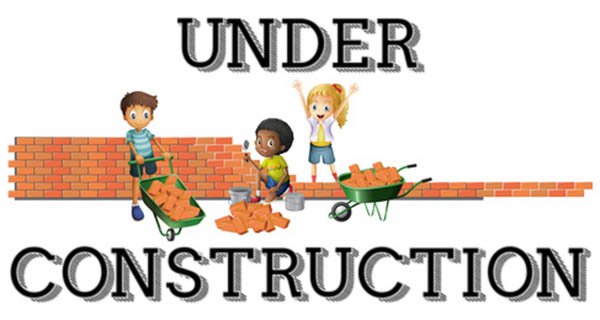An Easy Start to Language Arts
By Diane Lockman
Printed in Practical Homeschooling #100, 2011.
 How to increase the size of your child's vocabulary, starting from the earliest years
How to increase the size of your child's vocabulary, starting from the earliest years

| 
|
 C
Chattering away with abandon, an animated young mom
explains the Animal Kingdom to her cute, chubby-faced toddler as they explore the zoo together. She
explains. She shares facts. She asks questions. “Ooh, look at the giant rhinoceros! He’s
been rolling in the mud to keep cool on this hot summer day. I wonder if he likes to squish his
hooves in the gooey mess as much as you enjoy dipping your toes in mud,” she asks.
Is this mom simply filling the time with endless jabber, or is she actually building a firm
foundation for language development?
The young mother may not even be aware of the long-term academic and economic consequences of her
incessant chatter. She is unconsciously bestowing a priceless gift.
Humans begin to acquire language skills from birth. If they are blessed to live with adults who
talk to them on a daily basis and who expose them to a variety of written texts, these children have
a clear advantage over their peers.
The more you talk and read aloud to your child, the faster his vocabulary will grow . . .
Did you know that there is a very strong cause-and-effect relationship between the academic success
of a child and the number of words that the parent speaks to the child?
We all share a basic lexicon from which we regularly draw vocabulary for communication and
understanding. In our Western culture, this inventory typically includes 7,000 commonly used words.
If you recorded every conversation that you had over the course of a week, you would see a pattern
in the number of repeated words.
The existence of this basic word bank and its link to parent-child talk was substantiated by a
remarkable decade-long study conducted in the mid-1980s by two University of Kansas professors,
Betty Hart and Todd Risley. As reported in their book, Meaningful Differences in the Everyday
Experience of Young American Children, 42 families were selected for the sample. Participation
criteria included a specific-age child (7 months to 36 months old) and a verifiable economic level
(professional, blue-collar, or welfare).
Over the course of three years, researchers recorded one full hour of every word spoken at home
between parent and child.
Six years later, all 30,000 pages of transcripts had finally been typed, coded, and analyzed with
the following hard facts. The recorded vocabulary for three-year-olds from professional families was
1116 words (310 spoken per hour), from working-class kids 749 words (223 spoken per hour), and 525
words (168 spoken per hour) for kids from impoverished families. Extrapolating the recorded words
over a 100-hour week, a 5,200-hour year, and a four-year span, Hart and Risley estimated that the
kids in the average professional family had heard 45 million words, while the working class kid had
heard 26 million words, and the welfare child had heard 13 million words. At age nine, follow-up
studies by Hart and Risley with the same children showed that there was a correlation between the
basic vocabulary word bank and measured language abilities.
The study seems to show that wealthier families provide richer word banks. But what it really
demonstrates is that the more words a child hears from birth, the greater his or her own personal
word bank will be. Wealthier families seem to do this by instinct, but it doesen’t cost
anything to talk! Even if you are on public assistance, or if your spouse is employed in a
blue-collar field, you can commit to talking more to your child and making reading aloud a daily
ritual. Without question, the more you talk and read to your child, the faster his or her vocabulary
base will grow.
In the early years, acquiring a word bank depends on how many words are addressed to a child. The
more words that an infant, toddler, or young child frequently hears, the more likely that child is
to draw from those familiar words when expressing ideas. Hearing these basic words repeated through
conversations and reading aloud sessions will make decoding the written words easier later on when
he is learning to read on his own.
The more printed text you make available, the more unusual words your child will master . . .
But before you rest on your conversational laurels alone, consider that the basic 7,000-word
lexicon is just a baseline for understanding and communicating. The rare words are the ones that
make the difference. According to reading experts, the strength of language skills is not based on
the most commonly-used words but on the inventory of advanced words over and above the common
lexicon.
Where will your child discover such unusual words?
In the early years, thoughtful selection of stories can introduce less frequently used words. When
you read aloud, you demonstrate how to pronounce such rare words, and if the child is sitting next
to you while looking at the text, you can point to the unusual words so that over time he learns to
spell words that don’t always follow the rules. Repeated contact with rare words when Mom or
Dad is reading an enthralling narrative with a few challenging words sprinkled throughout the text
goes a long way towards increasing the child’s comprehension and context for decoding meaning
later on.
Once the child learns how to read, exposure to print greatly increases achievement, because
written texts contain more rare words than conversations. These rare words are incorporated into the
child’s own lexicon, which means he has a larger vocabulary base from which to draw for
speaking and writing.
So how do you expose your child to those vital rare words? Not by sitting him or her in front of
the TV—even for educational children’s programming. Surprisingly, according to an
article I found online at a University of Oregon site, entitled “Selected Statistics for Major
Sources of Spoken and Written Language,” a typical Sesame Street or Mr. Rogers episode is far
less beneficial for building vocabulary than the average children’s book . . . or even a comic
book! Compare two rare words per thousand for children’s TV programming to 31 rare words per
thousand for the book, to 54 rare words per thousand for the comic book. Finally, you have a good
excuse to spend the afternoon pouring over volumes of Calvin and Hobbes comic books!
According to “Selected Statistics,” other print sources have increasingly higher
amounts of rare words, including adult books (55/1000), magazines (66/1000), newspapers (68/1000),
and scientific journals (128/1000).
In fact, a writing assessment called the NAEP, performed annually under the supervision of the
U.S. Department of Education, shows in the profiling data collected before the 2007 exam that kids
with access to written texts also score higher on writing achievement tests, adding eight points on
average.
This makes sense when you consider that most writing skills are learned through imitation.
The larger your child’s vocabulary, the greater the chance of academic and economic success.
Life is unpredictable, but as a homeschool parent, here are two things you can do that will
provide tangible rewards, both in short-term academic achievement and long-term economic prosperity
and life satisfaction.
Make a daily commitment to:
- Engage in meaningful conversations with your child
- Thoughtfully expose him or her to quality reading materials
Your decision to intentionally build your child’s word bank will yield immediate fruit, such
as improved speaking, reading, writing, spelling, and grammar skills, while you equip your child
with the tools for lifelong success.
The advantages are clear; now all you have to do is make the investment of time to reap the
tangible rewards of talking and reading to your kids.
Why not start today by reading an article from PHS out loud to your child? You are sure to build
that rare word vocabulary!
For Further Study
- Risley, Todd and Hart, Betty, Meaningful Differences in the Everyday Experience of Young American Children (Baltimore: Paul H. Brookes Publishing Company, 1995)
- University of Oregon Center on Teaching and Learning, “Selected Statistics for Major Sources of Spoken and Written Language,” http://reading.uoregon.edu/big_ideas/voc/voc_what.php
- National Assessment of Educational Progress, “The Nation’s Report Card: Writing 2007,” http://nces.ed.gov/nationsreportcard/pubs/main2007/2008468.asp